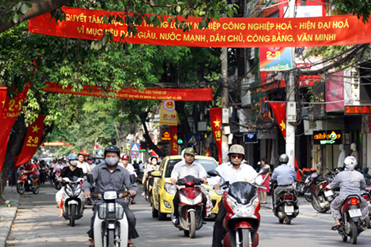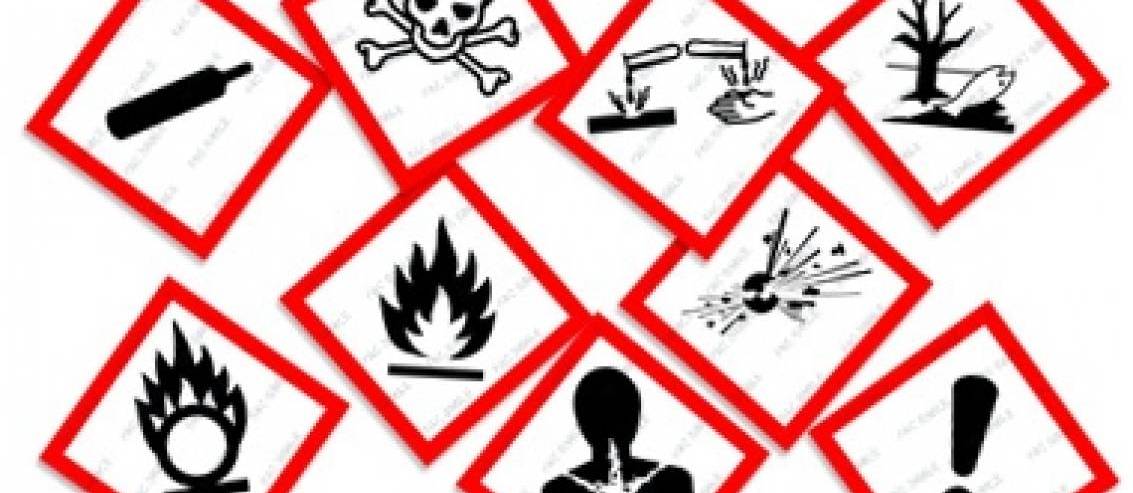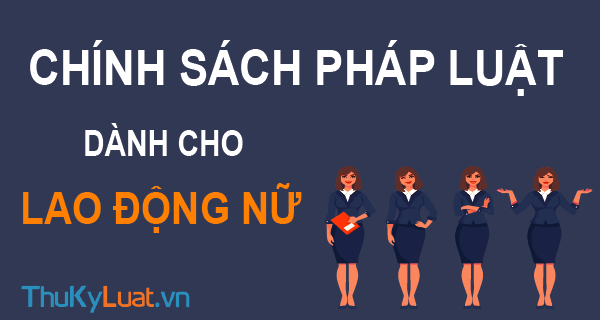Rights and obligations of employees, employers, and state management related to occupational safety and hygiene in the Law on Occupational Safety and Hygiene 2015 have been inherited and developed with many new contents compared to previous regulations in the Government of Vietnam's Decrees, the Labor Code, and the Social Insurance Law.
The rights, obligations of employees, employers, and state management related to occupational safety and health in the Law on Occupational Safety and Hygiene 2015 have inherited and been developed with many new contents compared to regulations in previous Government Decrees, the Labor Law, and the Social Insurance Law.
Regarding the scope of adjustment, the 2015 Law on Occupational Safety and Hygiene expanded the beneficiaries of occupational accident and occupational disease policies appropriate to those who pay social insurance (SI). It added workers working under seasonal labor contracts or specific jobs for a term of 3 months to less than 12 months, including contracts signed between employers and legal representatives of those under 15 years old under labor law; those working under labor contracts with a term of 1 month to less than 3 months; those performing other tasks in cryptography organizations; enterprise managers, executive managers of cooperatives receiving salaries, and workers without contracts. (Please review this section as the Labor Code and the SI Law already have regulations).
Regarding the conditions for enjoying occupational accident policies, maintaining three cases eligible for occupational accident benefits but supplemented with detailed explanations and legalized some contents in two cases: accidents at the workplace during working hours and accidents outside the workplace or outside working hours while performing tasks at the employer’s request. An accident at the workplace or within working hours includes cases when the employee is meeting essential living needs at the workplace or during working hours as permitted by the Labor Code and internal rules of production and business establishments, such as breaks, mid-shift meals, material supplements, menstrual sanitation, showers, breastfeeding, toilet use. Additionally, supplementing a regulation stating employees not entitled to benefits paid by the Occupational Accident and Occupational Disease Insurance Fund if the accident results from one of the following reasons: a conflict unrelated to work or labor tasks initiated by the victim; intentional self-damage to health; use of narcotics or other illicit drugs violating legal regulations. This is one of the essential supplementary contents regarding conditions for enjoying occupational accident policies. According to current regulations, occupational accident policies apply when accidents occur in the workplace, during working hours, or outside the workplace and working hours upon assignment by the employer, without exclusion conditions, which caused complications in some cases during resolution. The new regulations specify cases where benefits are not granted, ensuring organized execution and fairness for beneficiaries.
Regarding occupational disease policies, additional provisions cater to cases where workers retire or no longer work in sectors, professions, or jobs with occupational disease risks listed by the Ministry of Health and MOLISA, upon detection of an occupational disease. The Ministry of Health (after consulting MOLISA, the Vietnamese General Confederation of Labor, and employer representatives) will issue the revised conditions for diseases in the list, replacing the current status where both the Ministry of Health and MOLISA jointly issued conditions.
In terms of disability assessment, an additional rule applies to cases of unmanageable injuries or occupational diseases: according to the Minister of Health’s regulations, employees can undergo assessment during treatment or without prior treatment. Additional rules mandate a 24-month period for reassessment of occupational accidents or diseases after a recurrence since the previous assessment by the Medical Council. Regarding service allowances, the criterion changes from “inability to self-care” for cases with an 81% impairment or more, replacing the current detailed listing of specific cases.
Regarding convalescence and health recovery post-occupational accident or disease, the fundamental amendment is standardizing the allowance rate per day to 30% statutory pay rate with only one form of convalescence, replacing the current two forms (25% at home and 40% concentrated). This unification fits post-sickness or maternity convalescence policies regulated in the revised SI Law. Additionally, the Law stipulates a maximum 5-10 days of convalescence depending on impairment levels, whereas, under current regulations found in Decrees and Circulars, convalescence is taken within 30 days of returning to work post-treatment if health is still weak.
Notably, procedures and documentation for claiming occupational accident and disease benefits within Law on Occupational Safety and Hygiene have seen significant changes: eliminating elements in current procedures that caused substantial complications, such as the labor accident investigation report for occupational accident benefits and the toxic environment measurement report for occupational disease benefits. These eliminations cater to administrative reform and simplification demands; the process for resolving occupational accident and disease benefits becomes simpler, quicker, and minimizes complications compared to current practices, also reducing responsibilities for SI authorities in file assessment and benefit approval. Nevertheless, rules are imposed to prevent misuse, necessitating employer responsibilities when proposing benefits for employees, alongside strengthening archival infrastructure and primary data storage for employers and relevant authorities, ensuring transparency and accessibility upon request.
Expenses from the Occupational Accident and Occupational Disease Fund are supplemented with costs for disability assessment; support for prevention and risk-sharing for occupational accidents and diseases; and vocational transition support for workers returning post-accident or disease. Specifically, if injured workers are reassigned to new jobs within their manager’s jurisdiction under the Law, and require training for occupational transition, tuition fees are supported up to 50% tuition level and not exceeding 15 times the statutory pay rate; each worker is supported once annually.
For preventing and mitigating losses from occupational accidents and diseases, the Law provides specific guidelines and encourages enterprises to conduct risk assessments, preventions, labor condition improvements, and foster occupational safety culture. Article 56 of the Law on Occupational Safety and Hygiene mandates that annually, up to 10% of the Occupational Accident and Occupational Disease Fund's revenue supports activities for prevention and risk-sharing about occupational accidents and diseases. These include medical check-ups, treatment for occupational diseases; labor recovery; investigations of occupational accidents, and disease cases as requested by SI authorities; training on safety and hygiene for insured workers, defined in Clauses 1, 2 Article 14 of the Law.
Support for activities specified in Points a, b Clause 2 Article 56 excludes costs covered by Health Insurance as regulated by the Health Insurance Law or costs already supported by employers under Clause 2 Article 38 of the Law. The Government of Vietnam outlines detailed conditions, documentation, levels of support, time frame, procedures, and authorities for decisions and organizing support implements as stated in Articles 55, 56, ensuring the equilibrium of the Occupational Accident and Occupational Disease Fund.
The 2015 Law on Occupational Safety and Hygiene significantly expands policies for those affected by occupational accidents and diseases. For contract workers, two new policies support vocational transition post-accident and preventive activities against risks. Contributions to occupational accident and disease insurance are flexible, capped at 1%; insurance policies for occupational diseases after retirement or work transition are also included; employee rights are protected when having multiple labor contracts or home-based work arrangements.
For workers without labor contracts, there are policies for information, outreach, education on OSH; the State supports OSH training for jobs with stringent OSH requirements; statistics, reporting, and investigation on labor accidents, and voluntary occupational accident insurance.
Previously, the Labor Code only defined the obligations of employees and employers; the Law on Occupational Safety and Hygiene grants specific rights to both, and also details union, Vietnam Farmers' Union, and Vietnam Fatherland Front responsibilities, among other social organizations. OSH inspection is clearly defined as specialized, organized at central and local levels. Importantly, with prevention-focused measures being more cost-effective than addressing consequences, and fostering a culture of safety within enterprises being more beneficial than seeking post-accident support, the first OSH Law of our State is expected to create significant positive impacts in safeguarding workers' health in productive economic activities.
Rights and Obligations of Employees, Employers, and State Management Related to Occupational Safety and Hygiene Work According to the Law on Occupational Safety and Hygiene 2015 (Law on Occupational Safety and Hygiene), inheriting and developing many new contents compared to the provisions in the Decrees of the Government of Vietnam, the Labor Code and the Social Insurance Law previously enacted.
Regarding the scope of adjustment, the 2015 Law on Occupational Safety and Hygiene expanded the beneficiaries of occupational accident and occupational disease policies appropriate to those who pay social insurance (SI). It added workers working under seasonal labor contracts or specific jobs for a term of 3 months to less than 12 months, including contracts signed between employers and legal representatives of those under 15 years old under labor law; those working under labor contracts with a term of 1 month to less than 3 months; those performing other tasks in cryptography organizations; enterprise managers, executive managers of cooperatives receiving salaries, and workers without contracts. (Please review this section as the Labor Code and the SI Law already have regulations).
Regarding the conditions for enjoying occupational accident policies, maintaining three cases eligible for occupational accident benefits but supplemented with detailed explanations and legalized some contents in two cases: accidents at the workplace during working hours and accidents outside the workplace or outside working hours while performing tasks at the employer’s request. An accident at the workplace or within working hours includes cases when the employee is meeting essential living needs at the workplace or during working hours as permitted by the Labor Code and internal rules of production and business establishments, such as breaks, mid-shift meals, material supplements, menstrual sanitation, showers, breastfeeding, toilet use. Additionally, supplementing a regulation stating employees not entitled to benefits paid by the Occupational Accident and Occupational Disease Insurance Fund if the accident results from one of the following reasons: a conflict unrelated to work or labor tasks initiated by the victim; intentional self-damage to health; use of narcotics or other illicit drugs violating legal regulations. This is one of the essential supplementary contents regarding conditions for enjoying occupational accident policies. According to current regulations, occupational accident policies apply when accidents occur in the workplace, during working hours, or outside the workplace and working hours upon assignment by the employer, without exclusion conditions, which caused complications in some cases during resolution. The new regulations specify cases where benefits are not granted, ensuring organized execution and fairness for beneficiaries.
Regarding occupational disease policies, additional provisions cater to cases where workers retire or no longer work in sectors, professions, or jobs with occupational disease risks listed by the Ministry of Health and MOLISA, upon detection of an occupational disease. The Ministry of Health (after consulting MOLISA, the Vietnamese General Confederation of Labor, and employer representatives) will issue the revised conditions for diseases in the list, replacing the current status where both the Ministry of Health and MOLISA jointly issued conditions.
In terms of disability assessment, an additional rule applies to cases of unmanageable injuries or occupational diseases: according to the Minister of Health’s regulations, employees can undergo assessment during treatment or without prior treatment. Additional rules mandate a 24-month period for reassessment of occupational accidents or diseases after a recurrence since the previous assessment by the Medical Council. Regarding service allowances, the criterion changes from “inability to self-care” for cases with an 81% impairment or more, replacing the current detailed listing of specific cases.
Regarding convalescence and health recovery post-occupational accident or disease, the fundamental amendment is standardizing the allowance rate per day to 30% statutory pay rate with only one form of convalescence, replacing the current two forms (25% at home and 40% concentrated). This unification fits post-sickness or maternity convalescence policies regulated in the revised SI Law. Additionally, the Law stipulates a maximum 5-10 days of convalescence depending on impairment levels, whereas, under current regulations found in Decrees and Circulars, convalescence is taken within 30 days of returning to work post-treatment if health is still weak.
Notably, procedures and documentation for claiming occupational accident and disease benefits within Law on Occupational Safety and Hygiene have seen significant changes: eliminating elements in current procedures that caused substantial complications, such as the labor accident investigation report for occupational accident benefits and the toxic environment measurement report for occupational disease benefits. These eliminations cater to administrative reform and simplification demands; the process for resolving occupational accident and disease benefits becomes simpler, quicker, and minimizes complications compared to current practices, also reducing responsibilities for SI authorities in file assessment and benefit approval. Nevertheless, rules are imposed to prevent misuse, necessitating employer responsibilities when proposing benefits for employees, alongside strengthening archival infrastructure and primary data storage for employers and relevant authorities, ensuring transparency and accessibility upon request.
Expenses from the Occupational Accident and Occupational Disease Fund are supplemented with costs for disability assessment; support for prevention and risk-sharing for occupational accidents and diseases; and vocational transition support for workers returning post-accident or disease. Specifically, if injured workers are reassigned to new jobs within their manager’s jurisdiction under the Law, and require training for occupational transition, tuition fees are supported up to 50% tuition level and not exceeding 15 times the statutory pay rate; each worker is supported once annually.
For preventing and mitigating losses from occupational accidents and diseases, the Law provides specific guidelines and encourages enterprises to conduct risk assessments, preventions, labor condition improvements, and foster occupational safety culture. Article 56 of the Law on Occupational Safety and Hygiene mandates that annually, up to 10% of the Occupational Accident and Occupational Disease Fund’s revenue supports activities for prevention and risk-sharing about occupational accidents and diseases. These include medical check-ups, treatment for occupational diseases; labor recovery; investigations of occupational accidents, and disease cases as requested by SI authorities; training on safety and hygiene for insured workers, defined in Clauses 1, 2 Article 14 of the Law.
Support for activities specified in Points a, b Clause 2 Article 56 excludes costs covered by Health Insurance as regulated by the Health Insurance Law or costs already supported by employers under Clause 2 Article 38 of the Law. The Government of Vietnam outlines detailed conditions, documentation, levels of support, time frame, procedures, and authorities for decisions and organizing support implements as stated in Articles 55, 56, ensuring the equilibrium of the Occupational Accident and Occupational Disease Fund.
The Law on Occupational Safety and Hygiene 2015 significantly expands policies for those affected by occupational accidents and diseases. For contract workers, two new policies support vocational transition post-accident and preventive activities against risks. Contributions to occupational accident and disease insurance are flexible, capped at 1%; insurance policies for occupational diseases after retirement or work transition are also included; employee rights are protected when having multiple labor contracts or home-based work arrangements.
For workers without labor contracts, there are policies for information, outreach, education on OSH; the State supports OSH training for jobs with stringent OSH requirements; statistics, reporting, and investigation on labor accidents, and voluntary occupational accident insurance.
Previously, the Labor Code only defined the obligations of employees and employers; the Law on Occupational Safety and Hygiene grants specific rights to both, and also details union, Vietnam Farmers' Union, and Vietnam Fatherland Front responsibilities, among other social organizations. OSH inspection is clearly defined as specialized, organized at central and local levels. Importantly, with prevention-focused measures being more cost-effective than addressing consequences, and fostering a culture of safety within enterprises being more beneficial than seeking post-accident support, the first OSH Law of our State is expected to create significant positive impacts in safeguarding workers' health in productive economic activities.The support activities specified in Points a and b, Clause 2, Article 56 do not include expenses covered by the Health Insurance Fund as stipulated by the Law on Health Insurance or costs supported by the employer as stipulated in Clause 2, Article 38 of the Law. The Government of Vietnam specifies the detailed conditions for support, files, support levels, support duration, procedures, authority for decision-making on support, and the implementation of support policies stipulated in Articles 55, 56 of the Law and must ensure the balance of the Occupational Accident and Occupational Disease Fund.
It can be seen that the Law on Occupational Safety and Hygiene 2015 has expanded policies for the benefit of individuals suffering from occupational accidents and diseases. For employees under contract, two new policies have been added: support for career changes for those suffering from occupational accidents and diseases when they return to work, and policies for supporting activities related to prevention and risk-sharing. The insurance premium for occupational accidents and diseases is flexible, up to 1%; insurance policies for occupational diseases after retirement or transferring to other jobs; protection of workers' rights when entering into multiple labor contracts and suffering occupational accidents, and protecting the rights and interests of workers undertaking home-based work.
For workers without labor contracts, there are policies for information dissemination, communication, and education on occupational safety and health (OSH); the State supports OSH training for those performing jobs requiring strict OSH conditions; statistics, reporting, and investigation of occupational accidents; and voluntary occupational accident insurance.
Previously, the Labor Code only provided for the obligations of employees and employers, but the Occupational Safety and Health Act now specifies additional specific rights for both parties. In addition, the law clearly outlines the rights and responsibilities of trade unions, the Vietnam Farmers' Union, the Vietnam Fatherland Front, its member organizations, and other social organizations. OSH inspections are clearly identified as specialized inspections, organized at the central and provincial levels. Notably, with the motto that ensuring OSH involves more cost-effective preventive measures compared to dealing with consequences, building a safe culture in enterprises is much more beneficial than calling for support for victims of accidents and occupational diseases. The first OSH law of our State will bring substantial benefits in protecting workers' health in economic production activities creating material wealth for society.
- Key word:
- occupational safety and hygiene
- Vietnam
 Article table of contents
Article table of contents










.Medium.png)
.Medium.png)
.Medium.png)
.Medium.png)
